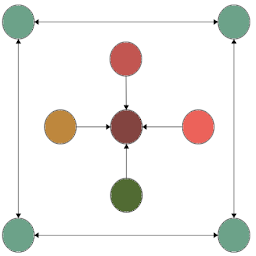0

 Given a permutation, we can define its high-water marks as the indices in which its cumulative maximum increases, or, equivalently, indices with values bigger than all previous values.
For example, the permutation \$ 4, 2, 3, 7, 8, 5, 6, 1 \$, with a cumulative maximum of \$ 4, 4, 4, 7, 8, 8, 8, ...
Given a permutation, we can define its high-water marks as the indices in which its cumulative maximum increases, or, equivalently, indices with values bigger than all previous values.
For example, the permutation \$ 4, 2, 3, 7, 8, 5, 6, 1 \$, with a cumulative maximum of \$ 4, 4, 4, 7, 8, 8, 8, ...